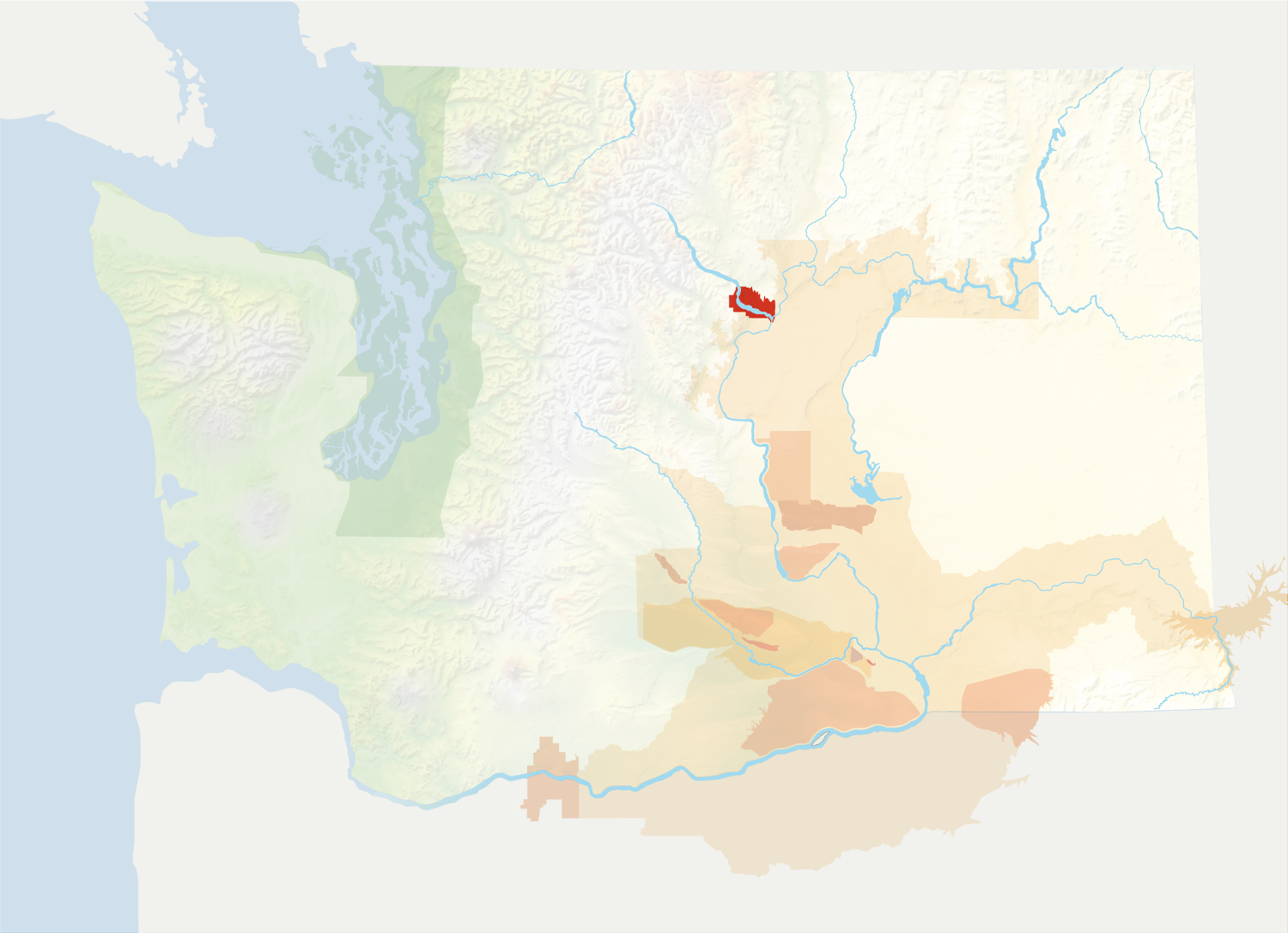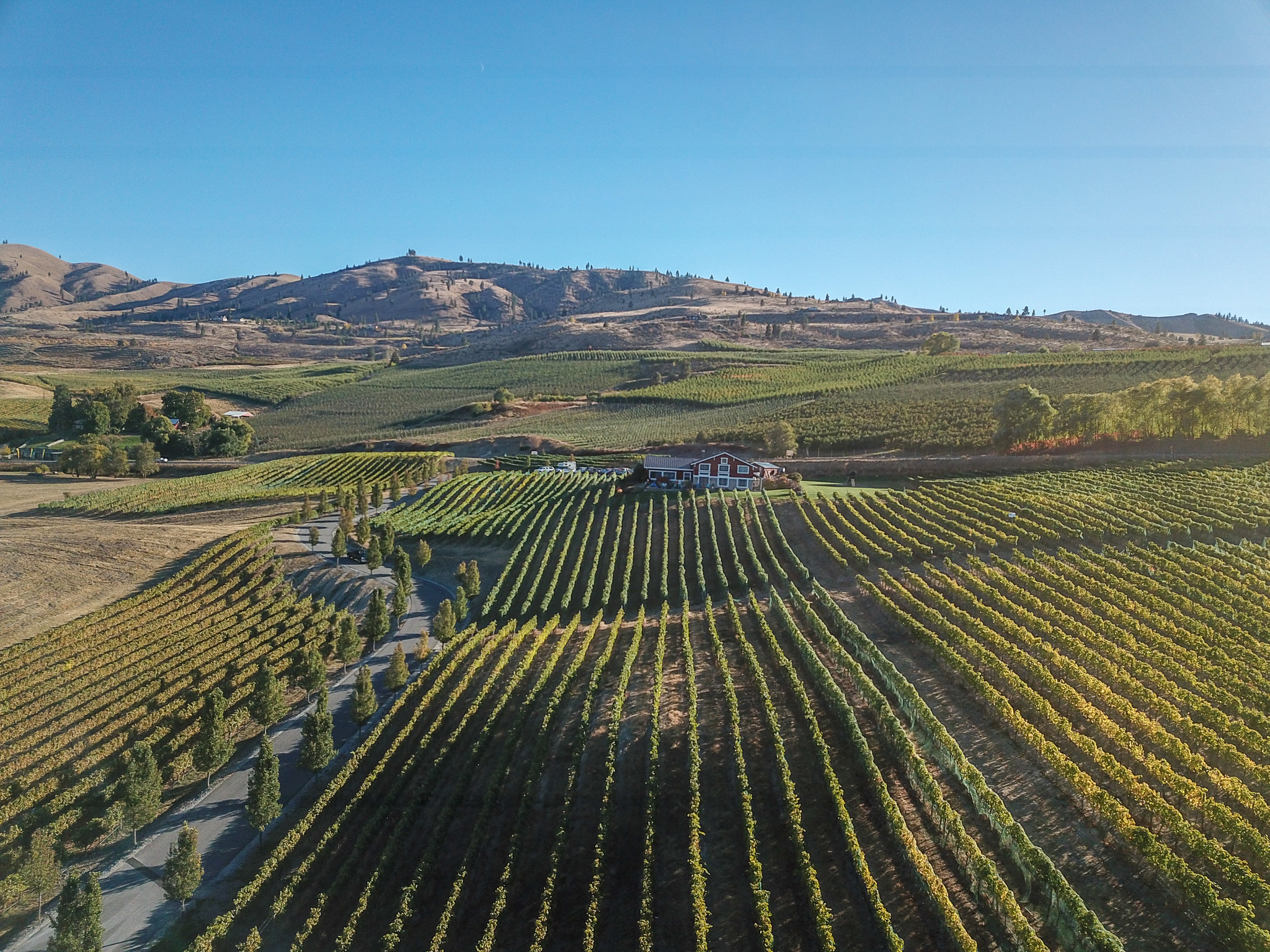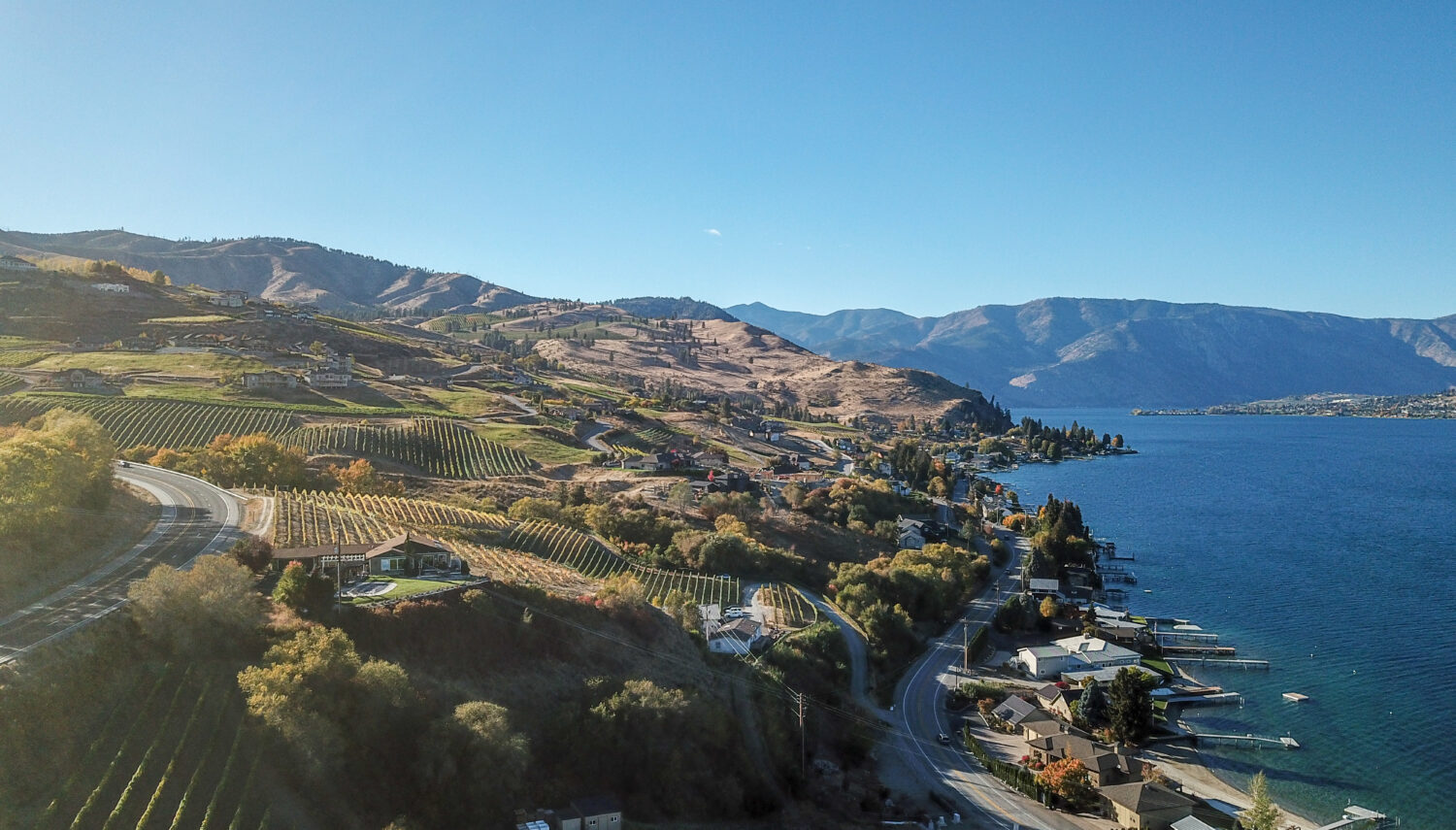Location: North-central Washington
Designated: 2009
Total Size: 24,040 acres
Acreage Under Vine: 269 acres (109 hectares)
Top Varieties: Syrah, Pinot Noir, Chardonnay, Pinot Gris, Merlot, Riesling
Soils: Glacial sediments along with ash and pumice
Average Annual Precipitation: 11 inches
Two Things to Know:
- Lake Chelan is one of the only appellations that does not have basalt bedrock.
- It has a unique climate, due to its location and the ‘lake effect.’
The Lake Chelan appellation is located in north-central Washington, wrapping around the southern-end of the tourist-popular Lake Chelan. It is a sub-appellation of the larger Columbia Valley.
Lake Chelan is named after a Native American word meaning “deep water.” It is a narrow, 50.5 mile, glacier-carved lake with depths up to 1,486 feet – among the deepest in the country. The average width of the lake is one mile. Lake Chelan is also at the edge of the Cascade Mountain range, with the northern end of the lake in North Cascades National Park.
Unlike almost all of the other sub-appellations of Columbia Valley, Lake Chelan has a granitic bedrock as opposed to basalt.
Climatically, the appellation is defined by its location at the north-western edge of the Columbia Valley and the ‘lake effect.’ Lake Chelan moderates temperatures, providing cooler summer days and warmer summer nights compared to the surrounding regions. The Lake Chelan appellation also has a somewhat higher elevation – approximately 1,100 feet above sea level – than some southern appellations within the Columbia Valley. Vineyards are located along the southern and eastern portions of the lake.

As a growing region, the Lake Chelan appellation is unique from others in eastern Washington in that it lies north of the Missoula Floods, which define the soil types of most of the Columbia Valley. Soil types here are glacial sediments along with ash and pumice from volcanoes from the nearby Cascade Range. The glacial sediments have substantial amounts of quartz and mica.
The appellation’s more northern location and moderate temperatures allow it to excel at cooler climate grapes. Lake Chelan is a young growing region, with its first modern day vinifera plantings in 1998.


